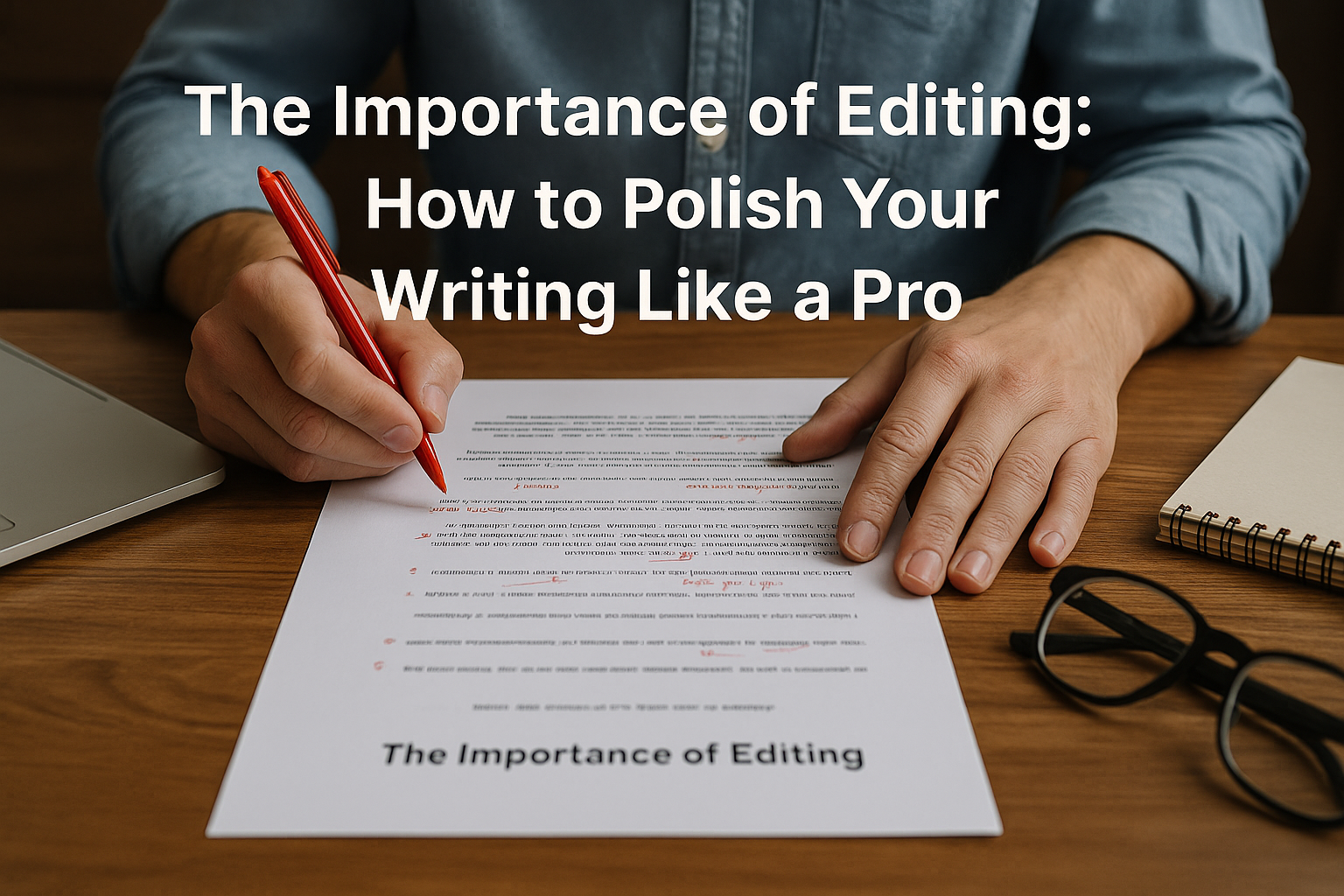No matter how brilliant your ideas are, they’ll fall flat if your writing is full of clunky sentences, grammar mistakes, or unclear thoughts. That’s where editing comes in — the secret ingredient that transforms a good draft into a great piece of content.
In this guide, we’ll break down the editing process into clear, actionable steps so you can revise your own work with confidence and produce writing that shines.
Why Editing Is Crucial
Editing isn’t just about fixing typos. It helps you:
- Clarify your message
- Improve flow and readability
- Cut unnecessary fluff
- Strengthen arguments and structure
- Ensure professionalism
First drafts are meant to be messy. Editing is where the real writing happens.
Step 1: Take a Break Before You Edit
When you finish a draft, step away from it — even if just for 30 minutes. Distance gives you a fresh perspective and helps you spot issues more easily.
Ideal break times:
- Short blog post: 30 minutes to a few hours
- Long article: Wait until the next day if possible
Step 2: Read Your Text Out Loud
Reading out loud helps you catch:
- Awkward phrasing
- Missing words
- Choppy rhythm
- Unnatural tone
If you stumble or get confused while reading it, your readers will too.
Step 3: Focus First on Structure
Before diving into grammar and word choice, ensure your content flows logically.
Ask yourself:
- Does the introduction hook the reader?
- Are the paragraphs in a logical order?
- Do transitions guide the reader between ideas?
- Is the conclusion strong and clear?
Rearrange sections if needed before polishing the details.
Step 4: Eliminate Filler Words and Redundancies
Beginner writers often use extra words that weaken the writing.
Common culprits:
- Just
- Really
- Very
- Actually
- Basically
- In order to
Example:
- Wordy: “In order to understand this concept, it’s really very important to just focus.”
- Better: “To understand this concept, focus.”
Tight writing feels more professional and impactful.
Step 5: Replace Weak Verbs With Strong Ones
Powerful verbs create energy and clarity in your writing.
Example:
- Weak: “She made a decision to start writing.”
- Strong: “She decided to start writing.”
Scan your text for phrases that can be simplified or strengthened.
Step 6: Watch Out for Passive Voice
Passive voice isn’t always wrong, but it often weakens sentences.
Passive: “The article was written by the freelancer.”
Active: “The freelancer wrote the article.”
Use tools like Hemingway Editor to flag passive voice.
Step 7: Check for Consistency
Be consistent with:
- Tone (casual or formal?)
- Formatting (headings, bold, bullets)
- Style choices (e.g., “email” vs. “e-mail”)
If you’re writing for a client, follow their style guide if provided.
Step 8: Cut Repetition
Repeating the same idea in different words can feel lazy or confusing.
Tip: Search for words like “important,” “thing,” or “this” — they often reveal unclear or repetitive ideas.
Step 9: Proofread Carefully
Now it’s time to zoom in and catch small errors.
Look for:
- Spelling mistakes
- Punctuation issues
- Capitalization
- Homophones (their/there/they’re)
Don’t rely solely on spellcheckers — they miss context-based errors.
Bonus tip: Read your writing backwards (sentence by sentence). It helps you spot surface errors without getting lost in the flow.
Step 10: Use Editing Tools (But Don’t Depend on Them)
Helpful tools include:
- Grammarly: Good for grammar and clarity suggestions.
- Hemingway Editor: Highlights complex sentences and passive voice.
- ProWritingAid: Detailed style and consistency checks.
Use them as guides — not replacements for your judgment.
Optional: Get a Second Opinion
Ask a fellow writer, friend, or client for feedback. A fresh pair of eyes can spot things you might miss, especially in longer or high-stakes content.
Create Your Own Editing Checklist
To streamline your process, make a checklist you can follow every time. Here’s a sample:
✅ Wait 30+ minutes after writing
✅ Read aloud
✅ Check structure and transitions
✅ Trim filler words
✅ Strengthen weak verbs
✅ Avoid passive voice
✅ Ensure consistency
✅ Cut repetition
✅ Proofread line-by-line
✅ Run through tools
Final Thoughts: Don’t Just Write — Edit Like a Pro
Writing and editing go hand in hand. One generates ideas, the other brings clarity. When you take editing seriously, your writing improves faster, your clients are happier, and your confidence soars.
So next time you finish a draft, don’t hit send just yet — edit with intention, polish with pride, and let your best work shine.

w5auig